This guide will answer any questions related to cane sugar vs granulated sugar in baking and help you to understand when to use which sugar in your recipes. While many sugars can be used interchangeably, as you progress in your baking expertise, it's important to understand even the subtle differences between them, so keep on reading.
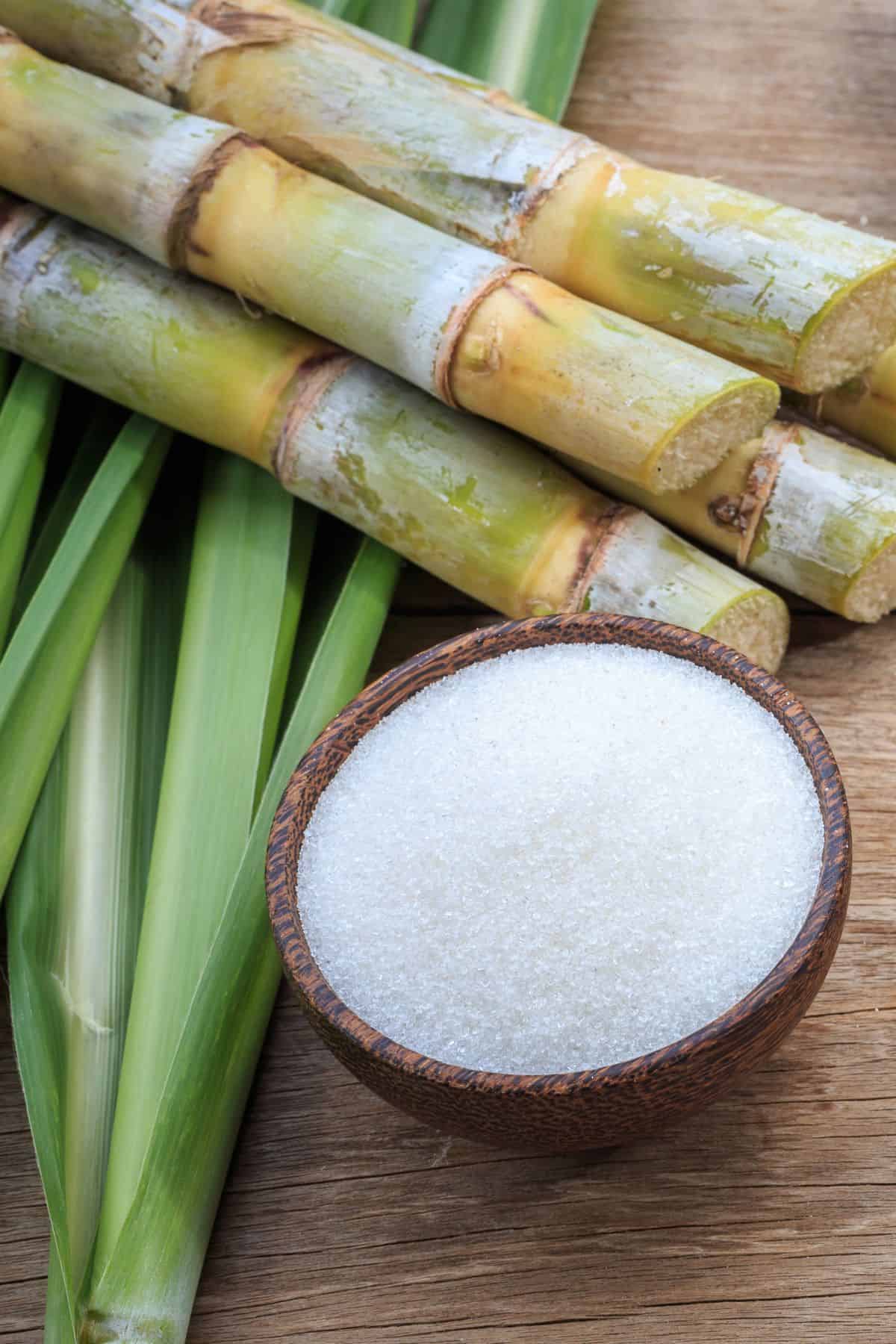
Jump to:
- What is the difference between cane sugar vs. granulated sugar?
- What is cane sugar?
- What is granulated sugar?
- Is cane sugar healthier than granulated sugar?
- Can you use cane sugar for baking?
- Can I substitute granulated sugar for cane sugar?
- Different types of sugars in baking
- Healthier Sugar Alternatives
- Cane Sugar FAQs
What is the difference between cane sugar vs. granulated sugar?
Maybe you're thinking is cane sugar the same as granulated sugar? The two types of sugar look and taste almost exactly the same, but there are subtle, yet distinct differences in granulated sugar vs cane sugar.
Granulated sugar and cane sugar are both white sugars, but cane sugar is made only from sugar cane and it undergoes less processing. Granulated sugar on the other hand can be made from sugar cane or sugar beet, and its processing includes involves more steps, including removing all of the present molasses from the refined sugar. This is the difference between cane and granulated sugar.
What is cane sugar?
Cane sugar is a sugar specifically produced from the sugar cane plant (Saccharum officinarum). Although it's often white in color, cane sugar isn't necessarily always white sugar. It can also be a brownish, darker color. This is because cane sugar can retain molasses, which is a natural byproduct of the sugar-making process as well as the ingredient that differentiates regular granulated sugar from brown sugar.
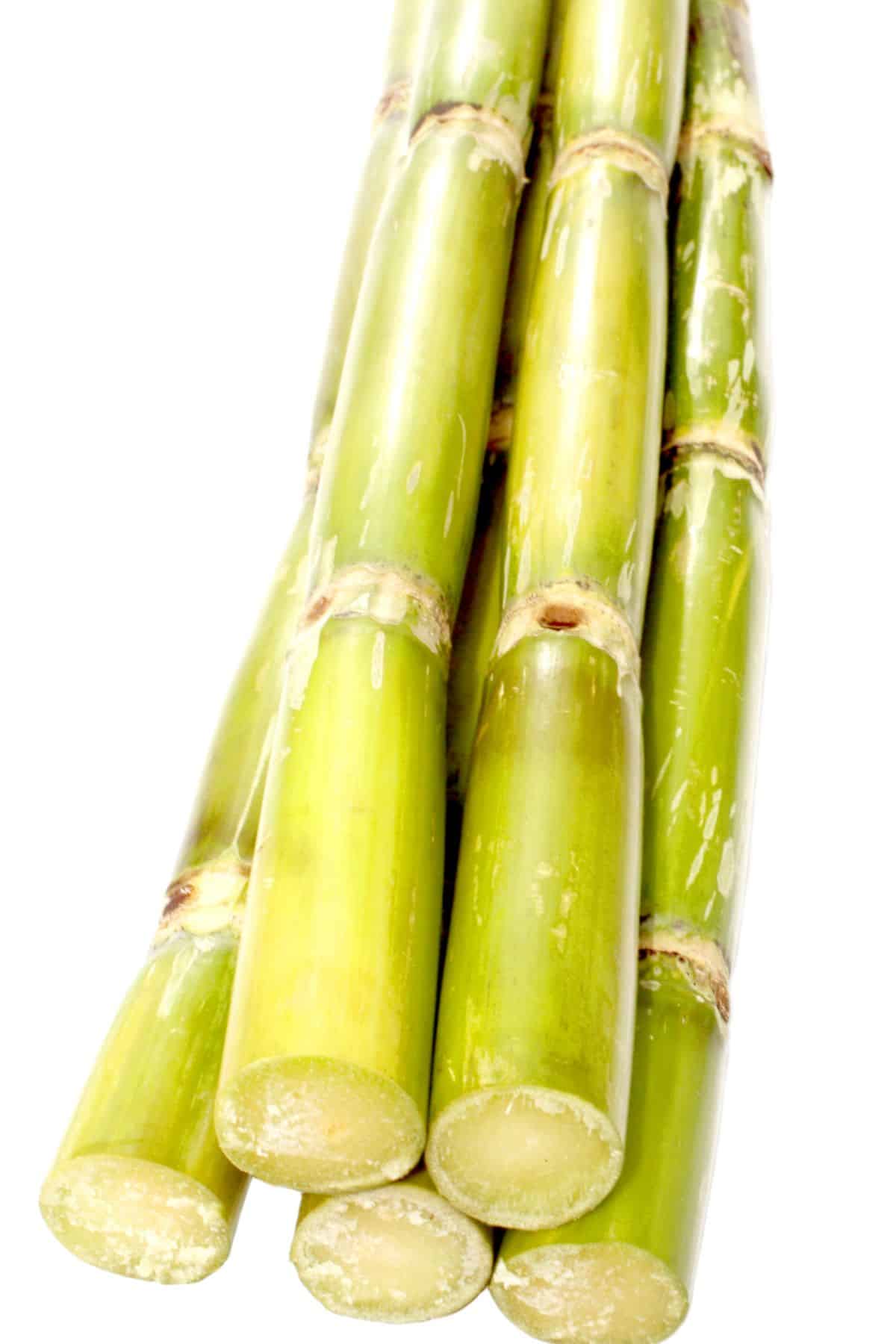
What is granulated sugar?
Granulated sugar is a generalized term for white sugar with fine granules. Made from either sugar beets or sugar cane, granulated refers to the form of the sugar after processing. After the purification and extraction processes of each type of sugar, both the sugarcane and sugar beets are left to dry into a crystalized form that is referred to as granulated.
Is cane sugar healthier than granulated sugar?
Granulated cane sugar is not necessarily healthier than granulated sugar made from sugar beets when it comes to calories. Both have a sucrose content of 99.5 and similar nutrition. Cane sugar, however, undergoes minimal processing in comparison to beet sugar. The processing makes the most difference between pure cane sugar vs granulated sugar.
So, if you consider the amount of refinement an important factor to determine healthiness, it makes sense for your final thoughts to be that cane sugar is somewhat healthier than granulated sugar.
Can you use cane sugar for baking?
You can use white cane sugar for baking in any recipe that calls for white granulated sugar baking. They function almost identically in cooking and baking. Some believe that granulated sugar made from sugar beets caramelizes easier than unrefined cane sugar because of the lack of impurities, but most have noted there is no noticeable difference.
Can I substitute granulated sugar for cane sugar?
In most cases, yes, you can substitute granulated sugar for cane sugar. There's not a significant difference in taste, though you may find cane sugar has a bit more depth of flavor. You might be wondering if the cane sugar to granulated sugar conversion is the same. It is! You can substitute the two for each other at a 1 to 1 ratio. The cane sugar vs white sugar measurement is exactly the same.
Different types of sugars in baking
Did you know that the type of sweetener you are using can make a huge impact not just on the sweetness of the final dessert but also on texture, flavor, freezing point, moisture retention, color, and even shelf life? Therefore, it's worth keeping in mind that sugar can't be reduced or removed from any food product without total reformulation of the recipe in order to maintain balance in flavors as well as in functions.
You have several different types of sugar at your disposal for different baking situations. Use this guide as a quick reference for which type of sugar to use depending on what you're making in the kitchen.
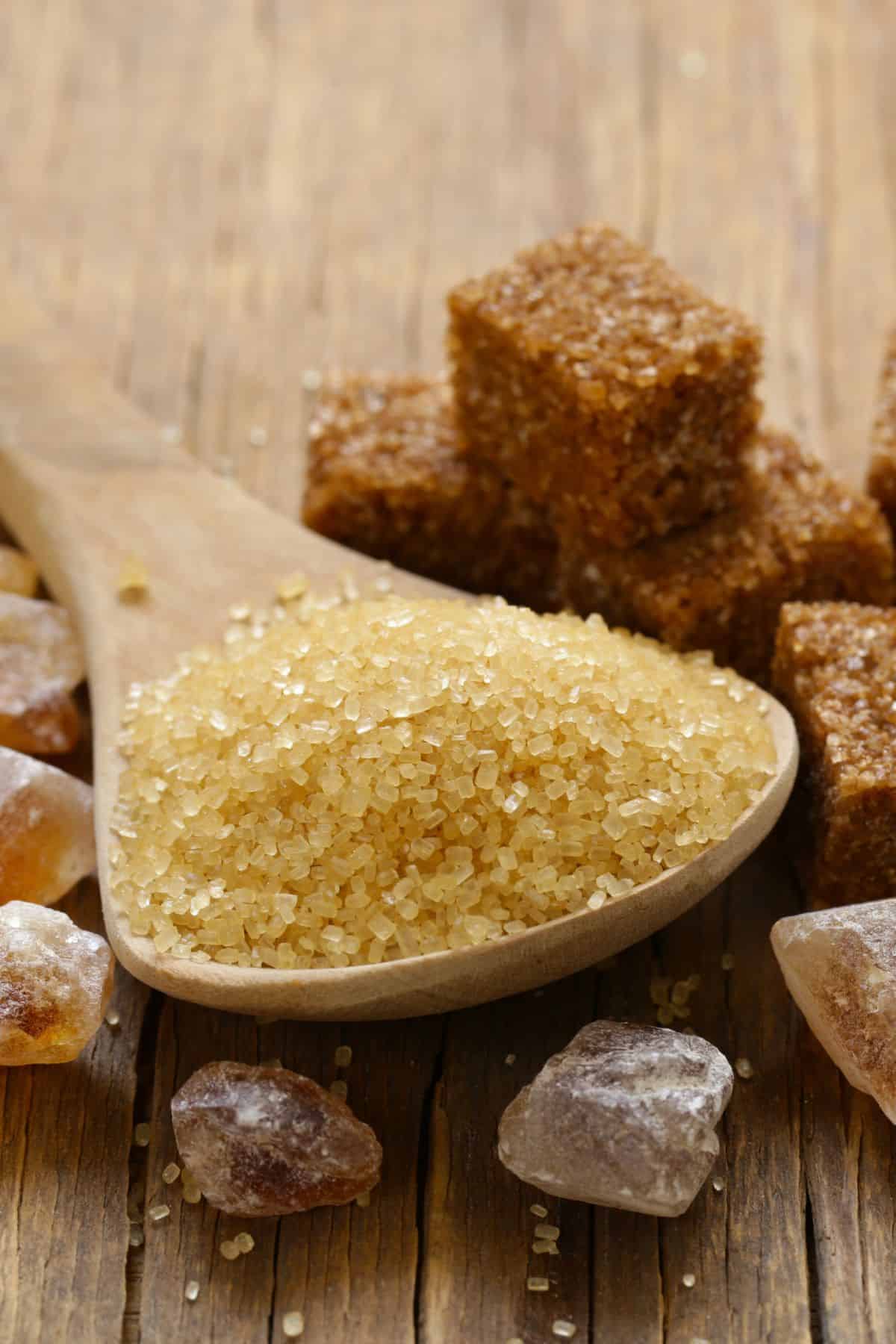
1. Caster Sugar
This sugar goes by different names, such as baker's sugar or superfine sugar. Caster sugar vs cane sugar or granulated sugar is a more finely ground sugar. However, manufacturers don't fully powder it like they do with confectioners' sugar. You can use it interchangeably with granulated white sugar at 1:1 ratio. Caster sugar breaks down more quickly in liquid than granulated sugar and still gives baked goods their sweet taste.
How to use it: Use caster sugar in place of granulated sugar with light and delicate desserts such as meringues and whipped creams. It's also an excellent option for beverages like lemonade or iced tea because it dissolves quickly.
2. Powdered sugar / Confectioners' sugar
Confectioners´ sugar, also called powdered sugar or icing sugar, is granulated sugar that has been finely ground into powder. It's not uncommon to have a very small amount of cornstarch added into the powdered sugar to prevent clumping. If you need a substitute for powdered sugar you can blend granulated sugar and cornstarch in a spice grinder or blender. Once it has broken down into a fine powder, it's ready to use.
How to use it: This ultra-fine sugar is perfect for American buttercream frosting, glaze, and other desserts that require a smooth consistency. It's also suitable for dusting on top of foods such ladyfingers, or crepes for a beautiful presentation. By the way, sucrose, is the chemical name of sugar.
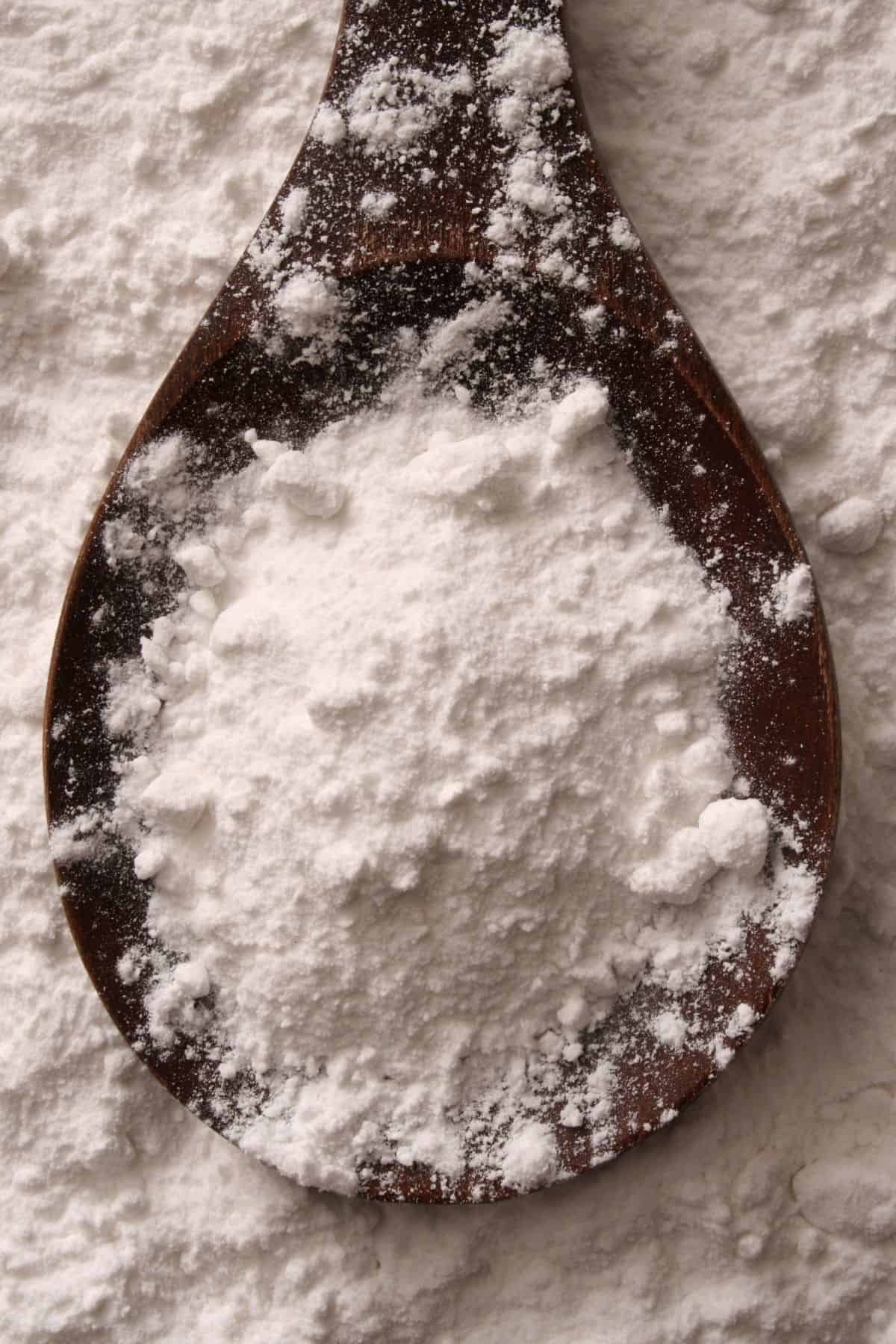
3. Granulated white sugar
Is granulated sugar the same as regular sugar? Yes, table sugar, regular sugar, and white sugar are other names for the granulated sugar that comes from either sugar cane or sugar beets. This is a standard sugar that has a wide variety of culinary uses and it also includes cane granulated sugar. From baking, to candy making and even sweetening a cup of coffee, granulated white sugar is a versatile and widely available sweetener.
How to use it: If you've ever baked a sweet treat, you've almost definitely used white sugar. Add white sugar for almost any standard baking need. This is the most popular type of sugar for everything from cakes, pies, cookies, brownies, and every baked good in between.
4. Granulated Brown sugar
Both dark brown sugar and light brown sugar are sweeteners that play important roles in baked goods recipes. Brown sugar has natural molasses added, which increases the amount of moisture and gives the sugar a sticky feel and a more complex caramelized taste.
How to use it: You can use brown sugar in baking and making all types of sauces, especially barbecue sauce. Its deeper flavor complements bold-flavored goods that need a touch of caramelized flavor, eg. these pecan chocolate chip cookies.
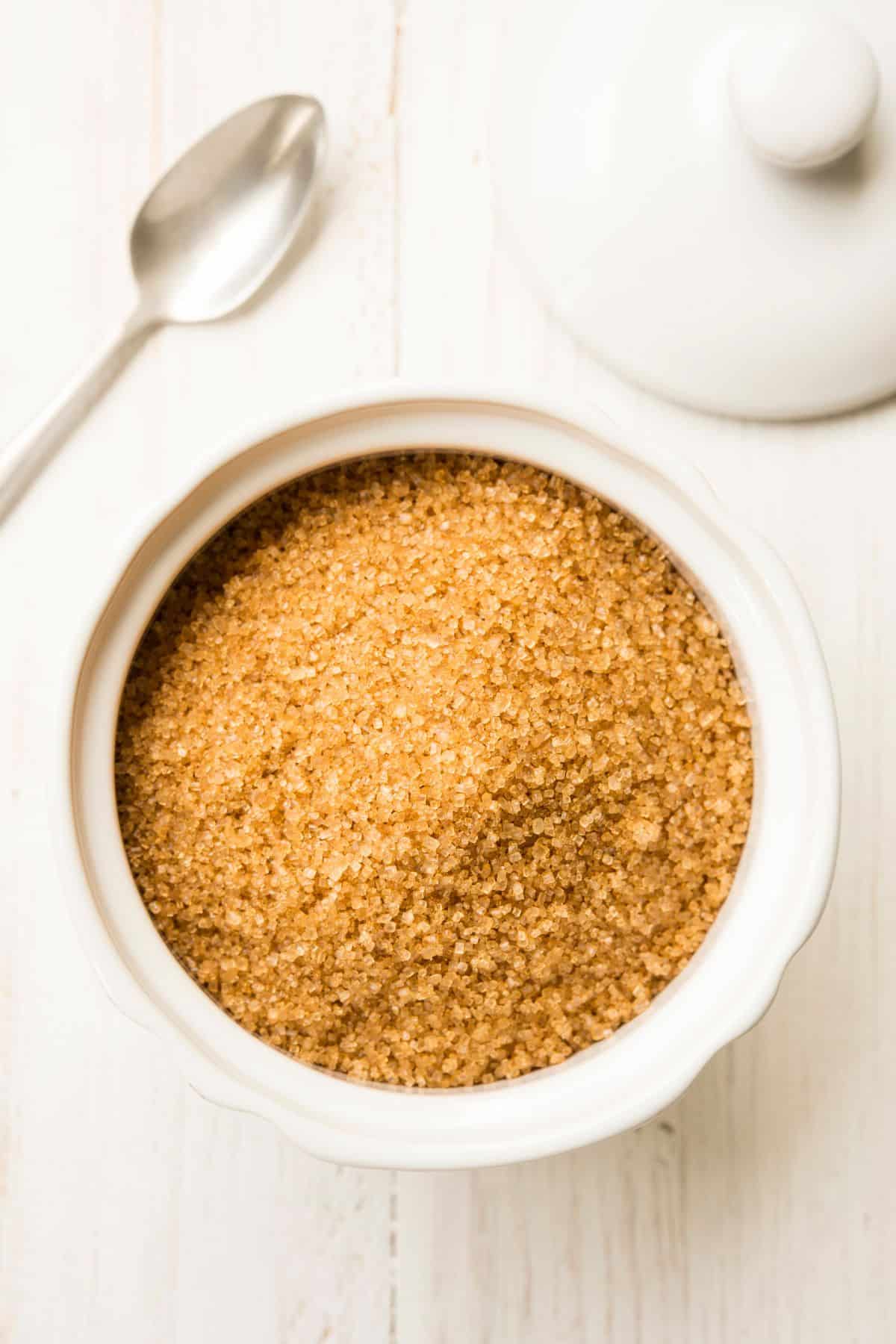
5. Invert Sugar
Invert sugar or inverted sugar syrup, is a thick sweetening liquid. It is a mixture of glucose and fructose and is made by heating up sucrose with water and adding cream of tartar or lemon juice. The end result is slightly sweeter than sugar. Pastry chefs often use it as desserts that contain inverted sugar retain moisture better and it also crystallizes less easily.
As a substitute home bakers can use honey which is natural invert sugar, however, honey flavor, as well as, texture can vary greatly which makes it difficult to give precise instructions in recipes.
How to use: Inverted sugar syrup is used for adding moisture and sweetness to baked goods but it's not something you'd expect to find on grocery store shelves. Invert sugar is typically used in commercial baking and by professional chefs who order it from special suppliers.
6. Glucose syrup
Glucose syrup is a clear, thick syrup. Producers of glucose syrup make it from a variety of starches sourced from corn, potatoes, and wheat. The process of hydrolysis converts the starch into a syrup that is suitable for use in commercial baking recipes to help retain moisture and provide concentrated sweetness.
Some sources refer to corn syrup as glucose syrup which is briefly correct only. Although corn syrup is a glucose syrup, glucose syrup is not always corn syrup. They can be interchanged however in most of the recipes.
How to use: Glucose syrup is perfect for making fondant, pre-made baked goods, and candies. It's ideal for candy because it does not crystalize and can aid in thickening. While most glucose syrups are used in commercial baking, corn syrup is a similar alternative that is readily available at grocery stores and used frequently by home bakers. I use glucose syrup in my caramel recipe which makes it smoother and less hard.
Healthier Sugar Alternatives
Maple syrup - Maple syrup is the sap from sugar maple trees after it's been that's been concentrated and cooked down into a thick brown syrup. While it has a distinct, rich flavor, this sugar alternative is a good option for cookies, quick breads, baked oatmeal, and more baked goods.
Honey - Honey is a natural sweetener that is a light translucent brown color and has a very sticky consistency. You can use it in cakes, breads, and most recipes that need a sweetener. Learn more about how to substitute honey for sugar in my article.
Dates - Dates are stone fruit that you can use as a sweetener in bars, crusts, and dips. Chop or blend them to add a caramelized taste to recipes in place of granulated sugar. You can also buy date syrup to use as a liquid sweetener.
Coconut Sugar - Coconut sugar is a cane sugar substitute. Processors of this sugar make it by dehydrating the sap from coconut trees. Coconut sugar also contains a small amount of minerals and antioxidants, leading many to consider it a healthy alternative to other types of sugar.
Novel sweeteners - Novel sweeteners are non-caloric and naturally derived. Sweeteners such as stevia, allulose, monk fruit, and tagatose fall into this category. Novel sweeteners are not as pure as natural sweeteners due to their processing, but they still offer low carb, low calories options for those who wish to use them.
Sugar alcohols - Sugar alcohols are growing in popularity in low carb candy, bars, ice cream, and baking mixes. They are naturally occurring in fruits, but often taste much sweeter than sugar and have a different chemical composition from table sugar. Examples include erythritol, Maltitol, and sorbitol.
Artificial sweeteners - You won't find these sweeteners anywhere in nature. Chemically created as a zero-calorie option for sweetening foods, artificial sweeteners come in many forms, including Sucralose, aspartame, and saccharin.
Cane Sugar FAQs
Sometimes substitutions are necessary, which might leave you wondering can you use cane sugar instead of granulated sugar for baking? Yes, cane sugar is suitable for baking. It can be used interchangeably with beet sugar, which is often listed as plain granulated sugar or white sugar. Cane sugar vs granulated sugar for cookies, for example, will yield no significant taste or consistency changes.
Cane sugar tastes almost identical to granulated sugar, with the exception of a slight molasses flavor sometimes present in cane sugar. Both work in various types of baked goods. You can view the two types of sugar as direct replacements for one another. Cane sugar vs granulated sugar for baking will yield the same results.
No, even though cane sugar can have a bit of a bolder taste, the sweetness will be the same as regular table sugar.
Cane sugar is technically delivered in a granular form. As a result of the separation of sugar crystals during processing, fine granules are formed, just like with table sugar. This can further aid the confusion between cane vs granulated sugar.
Cane sugar is mostly white in color (though it can appear slightly darker), but there's a difference between cane sugar and white sugar. White sugar typically refers to "regular" granulated sugar. That is the type of sugar that had all of its molasses refined out of it.
Molasses cause the difference. For white sugar, it is removed, but in brown sugar, a small amount is retained. This alters the taste and gives brown sugar a packable, sticky texture.

Leave a Reply